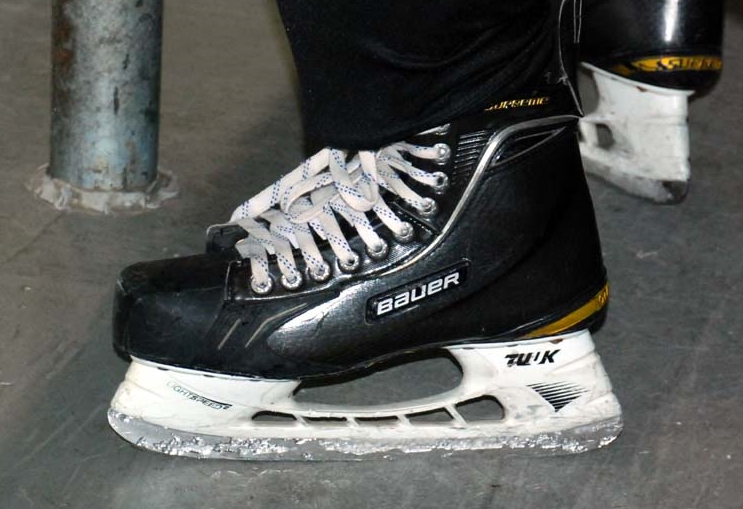There’s a saying in hockey: the fastest player on the ice is the one who’s just given the puck away. It’s true. I know this because I’ve just proven it ... and I couldn’t be more thrilled!
OK, I guess I’m not thrilled that I gave the puck away, and that it was to one of the other team’s faster forwards, and that he’s now bearing down on our goalie thanks to a 150-foot breakaway that I gift wrapped for him.
But, on the plus side, after putting my head down and skating my hardest, I’ve erased his 15-foot headstart and am now hot on his heels. I’m glowing with warm satisfaction. Hockey season has begun ... and I’m fast again!
* * *
When I got word in early September that our first game was scheduled for Sept. 15 my immediate thought was, “I can’t play hockey, it will get in the way of my training!”
After I got my head around the reality that my hockey training was in fact going to give way to actual hockey playing, I had to adjust my plan for the last chunk of the off-season, as this start date was a week earlier than I’d anticipated. One of my intentions during this last stretch was to attend at least two sessions of pickup shinny, but my suddenly compressed schedule allowed for only one such outing.
My goal for this particular ice session, besides the usual objectives of getting used to skates again and shaking off some rust, was to try to do more than I usually do, such as hold onto the puck more and try to beat opponents one-on-one, with speed, stickhandling or a combination of both. I wanted to try moves, even when I knew I shouldn’t, to really test what I can and can’t do, and ideally, expand my comfort zone a bit.
It was with great anticipation that I stepped onto the ice. Not only was I in the best shape of my life but my fit body had been specifically trained for the very activity in which I was about to engage. I wondered what it would feel like.
As I skated around, I noticed with satisfaction that my legs felt strong and energetic. I was moving significantly faster than I had in a few years and this effort wasn’t sapping my legs of their strength. On the other hand, the puck felt awkward on my stick and my shot felt like it hadn’t improved at all.
After we divided into sides and dropped the puck, I found I had more jump than I’d had in years. I was keeping up with the brisk pace without much trouble. However, I soon found that my stamina wasn’t great. My legs, while feeling strong initially, filled with a slight ache, a faint form of the burn you feel when you exert your muscles to their maximum. Moving around the rink became a bit more of a struggle and I had to fight to avoid slipping into my old pattern of doing as little as possible on the ice.
A few times I did force myself to hang onto the puck longer than usual and attempt to stickhandle past defenders or outskate them. Sometimes defenders easily swatted the puck away from me, but my speed bursts did earn me a few unfettered forays at the net. Of course, this was pickup hockey, where the effort devoted to defending tends to be lacklustre, so the extent of my improvement was hard to gauge.
* * *
As the season began and progressed through its first few games, the issue with leg fatigue persisted. I was puzzled. I’d spent months honing these aged appendages into densely muscled pistons of hockey propulsion — why were they getting tired after a few minutes of exertion?
I had an inkling that it may have to do with post-workout recovery time. I turned to the Internet, which told me that it can take anywhere from two to four days for muscles to recover after heavy exercise. I’d generally been performing leg-centric strength and power training about every second day. When I had a hockey game scheduled, I would take a break from such endeavours for 48 hours prior to the game. I thought this was allowing my muscles enough recovery time, but maybe I was wrong.
I started giving the old drumsticks an extra day off between workouts and before games. In fairly short order the burning stopped. I adjusted my workout schedule accordingly.
All catched up
So anyway, getting back to that guy on the breakaway, which was caused, incidentally, by wretched ice conditions and not a miscue on my part ... honest. As it turned out, the ice also contributed significantly to the resolution of the situation.
As the guy advanced into the deep slot, I was about a stick length away, not quite close enough to disrupt his attack but poised to take advantage of any miscue. He made a fake or two before getting the puck to his forehand for what was to be the fatal shot. Just then the puck skipped on the sandpapery ice, causing him to shoot only air. Before he could do anything more I swiped the bouncing puck into the corner and out of danger. Opportunity denied.
That play was a snapshot moment, one of several from my first few games, that illustrated where I’m at in my development as a late-blooming beer leaguer. In my next blog post, I will share a few more of these moments. Stay tuned.
